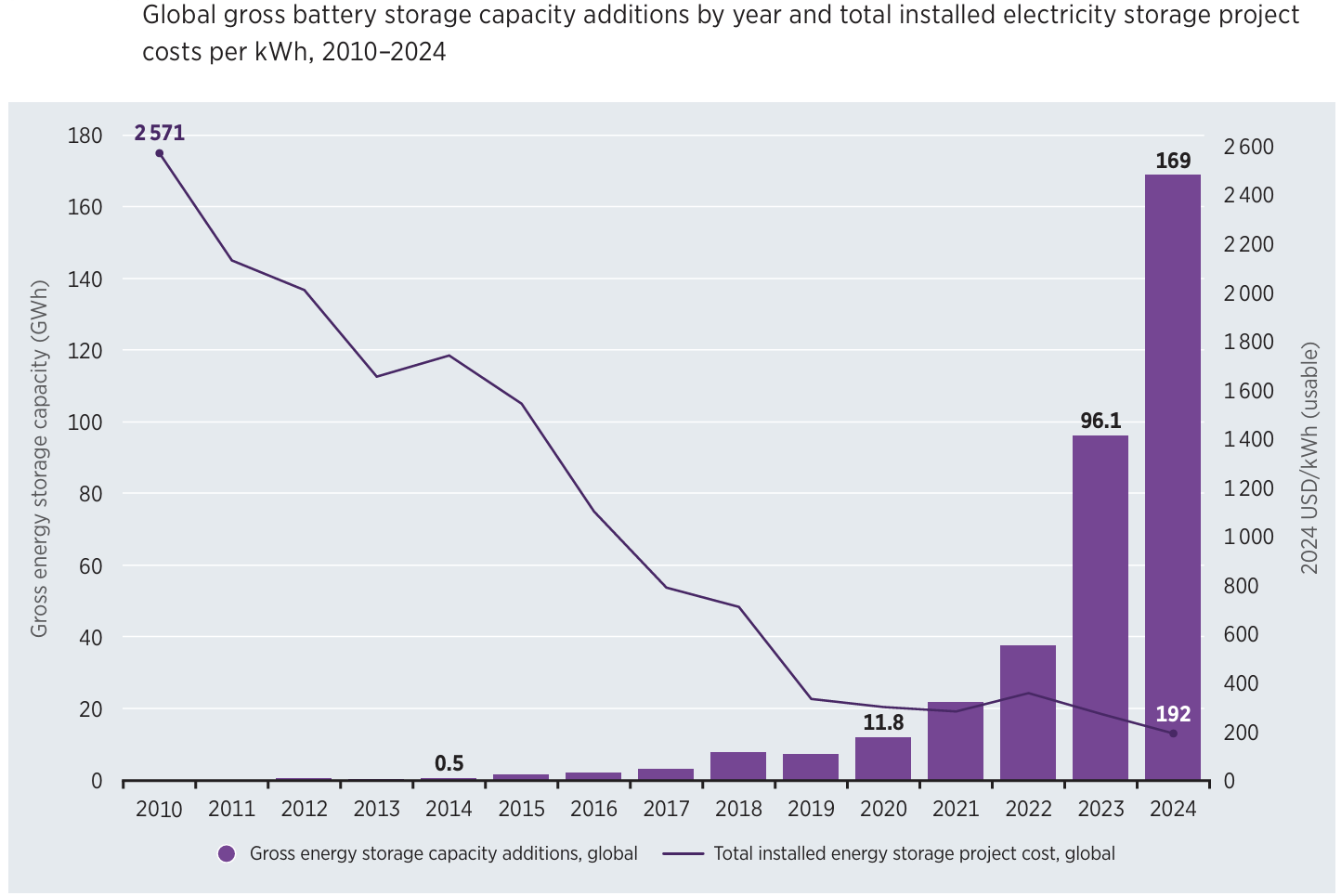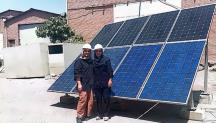

Battery Energy Storage Systems: Key to Renewable Power Supply-Demand Gaps
Newsletter
The intermittent nature of renewable energy sources presents challenges for electricity supply. Solar panels can generate electricity only during daylight hours, while wind turbines depend on weather conditions. As power systems increasingly integrate variable renewable energy sources such as solar and wind, the need for flexible and reliable power grids that can supply electricity at all times has become essential.
Battery energy storage system (BESS) can address these supply-demand gaps by providing flexibility to balance supply and demand in real-time. When renewable power production exceeds demand, batteries store excess electricity for later use, therefore allowing power grids to accommodate higher shares of renewable energy and supply electricity regardless the time and weather.
Since 2018, energy shifting has become the primary use of electricity storage, accounting for 67% of total capacity additions in 2024. This often involves using BESS to store renewable energy during low market prices or excess production, then releasing it to the grid during peak demand when prices are higher.
BESS for electricity fall into two main categories: utility-scale batteries and behind-the-meter batteries. Utility-scale batteries are connected to distribution or transmission networks or power-generation assets. These systems typically range from several megawatt-hours to hundreds of megawatt-hours in storage capacity, and are used for grid applications such as frequency regulation and energy shifting.
Behind-the-metre systems are connected through electricity metres for commercial, industrial, and residential customers. Typically installed with rooftop solar photovoltaics (PV) systems, they are primarily used for electricity bill savings, demand-side management, and back-up power.
The range in battery technologies reflects the varied requirements of different energy storage applications. Each battery type has a specific set of characteristics, that allow them to meet specific storage requirements, whether for rapid grid response that needs quick power delivery, or long-term storage that needs to discharge energy over an extended period.
Over the past 15 years, battery storage costs have declined significantly, due to technological improvement and increased global manufacturing which lead to economies of scale. Globally, costs of fully installed battery storage projects declined by 93% between 2010 and 2024, from USD 2,571/kWh to USD 192/kWh. Additionally, battery storage costs in 2024 decreased by 38% for a 2-hours system and 32% percent for a 4-hours system compared to 2023.

Across both utility-scale and behind-the-metre applications, lithium-ion batteries have established market leadership. Its adoption has been driven by higher efficiency, longer lifespan, and deeper depth of discharge compared to alternative battery technologies. The competition between suppliers across the entire value chain--particularly in China where strong production capabilities have been established—have also driven the costs down.
Within the lithium-ion sector, a shift towards lithium iron phosphate (LFP) chemistries has been taking place, particularly in utility-scale deployments. LFP's market share has grown from 48% in 2021 to an estimated 85% by 2024, driven by their lower costs, higher cycle life, and better security.
In addition, the costs of battery’s raw material such as lithium, nickel, and cobalt have also remained relatively low. This trend was partly driven by the stabilisation or decline in battery metal prices as new mining and refining capacity came online, softening demand expectations.
As storage costs fall, the combined cost of renewable power generation and storage solutions becomes increasingly competitive with conventional power sources. With more supportive policies and market mechanisms, BESS is poised to be a cornerstone technology for achieving high levels of renewable energy integration in the power system, making renewable power more attractive for both producers and consumers.
To explore more on this trend and the potential policies to further strengthen the business case of battery storage, listen to the latest episode of IRENA’s podcast, All Things Renewable, with Deborah Ayres from the Agency’s Renewable Energy Costs team.




